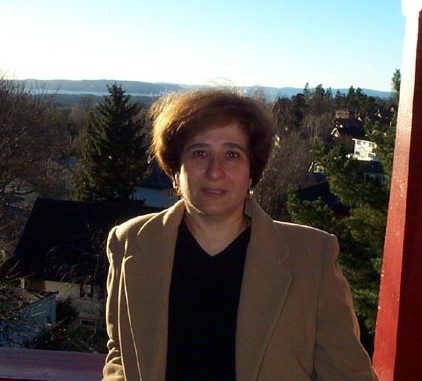
 Richard Riesenfeld and Elaine Cohen, the 2009 Pierre Bézier Award Recipients
Richard Riesenfeld and Elaine Cohen, the 2009 Pierre Bézier Award Recipients
In 1973 Riesenfeld’s PhD dissertation introduced B-splines as a powerful representation and design technique for geometric modeling and CAD/CAM. His thesis work was inspired in part by a 1970 visit that graduate students Cohen and Riesenfeld paid to Pierre Bézier in Paris to learn more about the ideas behind Bézier’s new methods for CAD/CAM. In 1974, shortly after arriving at Utah and with Cohen’s support, Riesenfeld and Barnhill organized at the University of Utah the first International Conference on Computer Aided Geometric Design (CAGD) to bring together for the first time many international pioneers in disparate activities, many of whom had never met but all of whom were pursuing an early vision of CAD/CAM. Pierre Bézier and Steve Coons were featured speakers at this small gathering where they both participated in the same technical event for the first time. This small conference of world leaders coined the name and launched the new academic field of CAGD. The conference proceedings were subsequently published in a book, Computer Aided Geometric Design, Academic Press, 1974. This book had been used as an important textbook for many students and young researchers who started their technical careers in geometric modeling and computer graphics in the early stage of these fields.
A member of the CAGD team at Boeing and a former PhD student of Riesenfeld, Jeffrey Lane teamed with Riesenfeld to publish, in 1979, what has become known as the Lane-Riesenfeld Algorithm for subdivision of Bézier surfaces and refinement of uniform B-spline surfaces. This has become a classic paper in geometric modeling because it presented an algorithm and argued the importance that subdivision, refinement, and knot insertion should hold in geometric modeling. The subject of a vast number of papers since, subdivision and knot insertion are now considered standard, necessary techniques that are expected to support modeling schemes for direct rendering, analysis, and implementation of Boolean operations of freeform models. While on sabbatical leave visiting the Norwegian Central Institute for Industrial Research, Riesenfeld and Cohen fortuitously met Tom Lyche at the University of Oslo. They collaborated with Lyche to develop the Oslo Algorithms to enable simultaneous knot insertion at multiple locations in a B-spline representation. These fundamental algorithms had lasting theoretical and practical impact. It was an enabling algorithmic technology for tractably employing nonuniform B-splines practically in geometric modeling systems. Theretofore, only the more restrictive uniform B-splines had gained acceptance, but the Oslo Algorithms, published in 1980, and the selective refinements that they enabled gave momentum to the eventual adoption of fully general nonuniform B-splines. In most contemporary CAD/CAM systems the greater representational power of nonuniform B-splines, as originally proposed in Riesenfeld’s dissertation, has supplanted uniform B-splines that were favored for simplicity in early CAD/CAM systems. In the areas of representational algorithms, Cohen and Riesenfeld have contributed several seminal papers in CAGD, including important works in box splines, cone splines, and simplex splines. While somewhat more theoretical in nature, these papers, like all of their works, have been done with an eye toward applications.
In 1980, Cohen and Riesenfeld began the Alpha_1 geometric modeling test-bed which continues to serve as a unique laboratory where many students have been able to conduct their research in geometric modeling and manufacturing. Throughout their career they have tied theoretical advances to practical gains in geometric modeling. Evidence to this effect is the spin-off company Engineering Geometry Systems (EGS) that they founded, which in 1995 introduced the FeatureCAM line of products. The hallmark of this company has been the notion of providing very high level mechanical design features linking manufacturing with geometry in a straightforward, intuitive manner. EGS’s international success led to its being acquired in 2005, by Delcam, the world’s leading CAM vendor.
In summary, Cohen and Riesenfeld have developed a strong academic program in CAGD that has been the training grounds for many students who have become contributors to the field. They have coauthored a significant reference and text for advanced study of B-spline methods in CAGD. Their sustained leadership and vision over decades of important research contributions and teaching has left their names inseparable from the field of freeform geometric modeling.
